
» café reason
» butoh
» diary
» new work
» past work
THEATRE WORK
»» limina
»» dolls' house
»» the heart's desire
»» matrix
»» orpheus
»» precarious footing
»» the if path
»» guess-station
»» la table
»» erosion
»» echo
»» bona dea
SITE SPECIFIC WORK
» classes
» contacts

Limina flyer
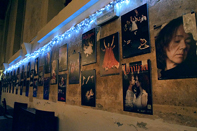
20th-anniversary photo exhibition.
To view PDF of exhibition images, click here!
Limina highlights (10 mins)
(Video: Peter Glyn Jones)
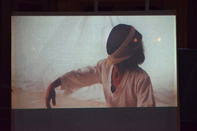
Ana Barbour — 'Such Pure Things'
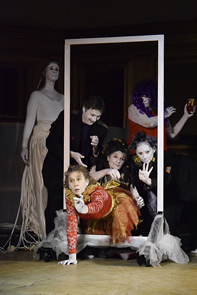
'Doorway'

'Lost Garden'
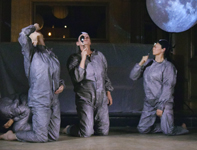

'Surviving Lunar'

'Egg'
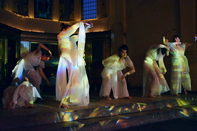
'Live Forms'
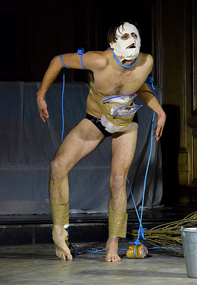
'28° — 6°'
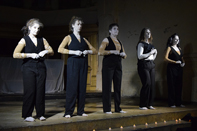
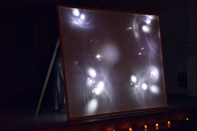
'Bona Dea'
LIMINA
liminal /ˈlɪmɪn(ə)l/ (adj.)
Relating to a transitional or initial stage of a process.
Occupying a position at, or on both sides of, a boundary or threshold.
This show is dedicated to Ana Barbour
11 October 1966 — 6 November 2017
At the winter solstice, as the earth tilts fractionally once more towards the sun, in the glimmering pre-dawn stillness, at the moment before waking when the dream dissolves, or just before sleep as the moorings of consciousness are let slip, or as the last breath leaves the body and the soul drifts away, or at the point when the old order is left behind and the new is all ahead — these liminal states and the possibilities they suggest were explored in our newest, part-improvised show Limina.
With this theme of beginnings and endings, transition, and duality, we looked back over our past and forward to our future, with an eclectic mix of reimagined early work and fresh choreography from our newer members — a dreamlike series of short butoh-inspired pieces, combined with live music and video.
For this climax of our 20th anniversary programme, and preceded by an exhibition of archive images, film, and costumes, we returned to our first-ever venue, the iconic Freud café-bar on Walton Street, with its unique architecture and atmosphere, for a creative and celebratory (and as it turned out, very snowy) evening.
Performers were Michelle Azdajic, Cath Blackfeather, Alex Donaghy, Jeannie Donald-McKim, Karen Goonewardene, Ayala Kingsley, Anne L Ryan, and Fabrizia Verrecchia. Long-term collaborators Malcolm Atkins (keyboard, violin, voice), Bruno Guastalla (cello, bandoneon), Pete McPhail (flute, saxophone), and Malcolm Smith (percussion) provided an exciting and original musical interpretation.
PROGRAMME
• Such Pure Things — film of work-in-progress (Ana Barbour, 2017; video Chris Atkins)
• Doorway (Cath Blackfeather — concept and door — & Café Reason, 2017).
• Hearing (Anne L. Ryan, from The Heart's Desire, 2014, Old Fire Station).
• Lost Garden (Ayala Kingsley & Fabrizia Verrecchia; choreography Jeannie Donald-McKim & Fabrizia Verrecchia, from Erosion, 1999, Pegasus Theatre)
• Live Forms (Karen Goonewardene — concept, video, and soundtrack — & Café Reason; from Diamond Night #16 and at Modern Art Oxford, 2016)
• Surviving Lunar (Michelle Azdajic — concept and choreography — & Café Reason, 2017)
• Egg (Michelle Azdajic; concept and sculpture, Karen Goonewardene, 2017)
• 28° — 6° (Alex Donaghy, 2017)
• Bona Dea (Café Reason; choreography Jeannie Donald-McKim, from Jelizma's Bona Dea 1997, Freud Café)
• Don't Worry — film (Ana Barbour, from Matrix 2011, Pegasus Theatre; video Peter Jones)
CREDITS
Artistic direction: Michelle Azdajic, Jeannie Donald-McKim & Karen Goonewardene
Project development: Ana Barbour, Cath Blackfeather, Karen Goonewardene & Ayala Kingsley
Administration: Ayala Kingsley
Production and marketing management: Joanna Matthews
Sound & light: Dominic Hargreaves
Costume: Fabrizia Verrecchia
Stage management: Fiona Sinclair
Exhibition (images): Ayala Kingsley, with Jonathan K. Ross
Exhibition (costumes): Cath Blackfeather, Karen Goonewardene & Fabrizia Verrecchia
Graphic design: Ayala Kingsley
Video recording and editing: Peter Jones
Photography: Paul Freestone
With thanks to Russell Anderson and Oxford Brookes University, Marston Village Hall and East Oxford Community Association for rehearsal space.
****************************************************
Café Reason gratefully acknowledge the financial support of Arts Council England and Oxford City Council.

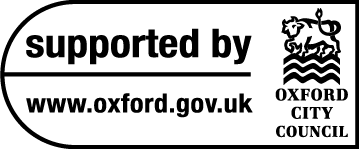
****************************************************